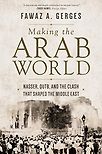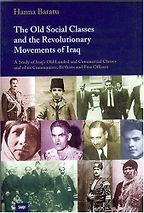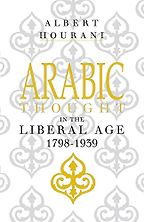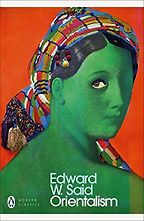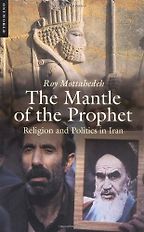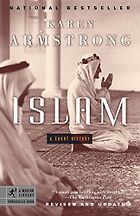Is there something about the books on the Middle East that you’ve chosen that unites them? Or were there particular aspects of Middle Eastern society or politics that you wanted to address in how you approached these Middle East reading recommendations?
The study of the modern Middle East has come a long way in the past half century. The traditional divide between area studies and the social sciences and humanities has almost been bridged. There are many scholars who feel at home in Middle Eastern studies as well as historical sociology, political theory and international relations. We now have excellent books on social and economic history, contentious and revolutionary politics, the struggle of every day peoples and politics from below, social movements, postcolonial theory, law and gender, the history of ideas, and much more.
The five books I’ve selected were pioneering in revolutionising the study of the modern Middle East by integrating area studies and the social sciences. These books expanded the lens through which to view the Middle East and its people and undermined the traditional approaches that had previously dominated the field.
The first of your books on the Middle East is Hanna Batatu’s The Old Social Classes and the Revolutionary Movements of Iraq: A Study of Iraq’s Old Landed and Commercial Classes and of its Communists, Ba’athists and Free Officers. Tell us a bit about this one.
This book is empirically rich and conceptually sophisticated. One of the first books to use primary documents in Iraq extensively. Batatu had access to the police records from the 1950s, 1960s and 1970s. Unlike many Middle Eastern specialists, Batatu did not just use American, British and French sources. It was a scholarly miracle that he was able to get to the police and security forces records in the 1960s and 1970s. But it gave him an insight into what was happening within the state structure and society. His use of internal records sheds original lights on the Iraqi political landscape.
Batatu was also able to interview many everyday Iraqis. Before him, many books on Iraq and the Middle East in general were diplomatic history, relying on interviews with the elites, kings, emirs and their advisors, decision makers, and civil society leaders. Batatu interviewed ordinary, common Iraqis, so this is a book from the bottom up, as opposed to top down. It’s one of the first books that examines the lives and struggles of every day Iraqis. It’s not a diplomatic history. It’s not the history of the ruling elites in Iraq. It took Batatu 20 years to write this book and he turns conventional wisdom on its head.
Conceptually, the book is original, too. Previous studies on Iraq and the Arab/Islamic world and the global south took the traditional approach for granted by focusing on tribe, sect, ethnicity and religion. In contrast, Hanna Batatu’s book basically applies a Marxist-Weberian analysis, using Marxian and Weberian theoretical frameworks to try to understand the formation of social classes in Iraq and the power struggle over the state. In this particular way Batatu defies the conventional wisdom, which tended to look at the Middle East through the lens of tribe, ethnicity, sect and religion. He argues that you cannot make sense of the social and economic history of Iraq (or the modern Middle East), without understanding the role of capitalism and how it shaped the formation of the social classes and the landed classes.
Batatu zeroes in on two key historical eras of development, the Ottoman Empire and British colonialism. The Ottoman Empire destroyed the traditional mode of production in Iraq, by employing technology—the railway and the telegram. The Ottomans shifted the focus from the tribe and the sect and ethnicity into property. So it was the Ottoman Empire that produced the first great transformation of Iraqi society. Then, simplifying somewhat, British colonialism destroyed the old order and created a new ruling class, favouring the dominant landed classes, as opposed to the middle class or the lower middle class.
Thus, the Ottoman Empire and the British rule that ended in the early 1950s saw the development of capitalism. Capitalism created a very large working class as well as the beginnings of a new middle class. Under the Ottoman Empire, but even more so under British colonialism, there occurred massive migration from the countryside into urban areas. What you have in the city is an educated, relatively small, middle class, and a huge disenfranchised class. And these two classes coalesced and created a new political party in opposition to the ruling landed class. People don’t realise that the Marxist party in Iraq in the 1940s, and 1950s and even the 1960s, was the largest political party in Iraq. And not just in Iraq, but also in Egypt, Iran and Syria. In fact, the Marxist parties in Egypt, Iraq, Iran and Syria could have had ownership of the states, if it hadn’t been for social dislocation and intra-fighting among the various social and political elements and classes within the Communist parties.
So, the landed classes, instead of integrating the middle class, marginalised it, and the peasants also felt marginalised by the local elite, not just by the colonial powers. This particular convergence, this alliance between the middle class and the working class and peasants produced the 1958 revolution. The 1958 revolution was carried out by the local Marxist party in Iraq which included the working class, the peasants and the middle class.
One point must be made clear: the Marxists in Iraq were motivated by local conditions. They were not Stalinist, Leninist or Maoist. They were inspired by bread-and-butter concerns. They wanted to be integrated into the existing social and political structures. But they were denied access to social goods and power because the local elites and the landed classes would not allow it. In this sense, the landed classes were their own worst enemies because of their unwillingness to integrate the rising social classes, both the middle class and the peasants, into the political and social space.
“The Marxists in Iraq were motivated by local conditions. They were not Stalinist, Leninist or Maoist”
Another interesting thing about the Marxist party in Iraq is that it was Shia-dominated, while Arab Sunnis were co-opted by colonial Britain, which turned them into the ruling class. The Shias who migrated to the cities, to Baghdad, Basra and Mosul joined the Marxist party en masse, playing a significant role in the 1958 revolution. That is why Batatu’s book is called ‘the old social classes and the revolutionary movements’. It examines not only the formation of the social classes but also their transformation. After the revolution in 1958 this alliance between the middle class and the lower-classes splintered and fragmented into Ba’athists or nationalists and the Communists. The Ba’athists/nationalists succeeded in splintering the Marxists into factions, and then systematically eliminated them, most brutally. This repressive policy against the Communists was most aggressively pursued in the 1960s, with the rise to power in the Ba’ath Party of Saddam Hussein’s faction, which at the time was really a minority.
The book is fascinating because, instead of providing a political and religious history of Iraq, it really uses Marx and Weber to help us navigate the complexity of the Iraqi social scene, and its transformation. In the 1970s and 1980s, the same groups that formed major blocs in the leftist and Marxist parties turned to Shia Islam. Unfortunately, we don’t have all-encompassing comparative books to help us make sense of the social formations across the other countries in the region, that would tell the story of the rise of dominant groups, whether Shia-dominated or Sunni-dominated. If we did we would find that Iraq is not really an exception to the rule. In fact, it is the rule.
Batatu wrote the book in English, even though he was a Palestinian exile living in the United States. The impact of the book on Middle Eastern scholarship has been significant. Unlike most books on Iraq and the Middle East at the time, Batatu’s is neither a religious history nor a political-diplomatic history. Rather, it’s an original study about the socio-economic history of Iraq, using Marx and Weber to flesh out the formations of social classes and their subsequent transformation.
Let’s move on to the next of your Middle East books, Albert Hourani’s Arabic Thought in the Liberal Age 1798-1939.
Albert Hourani was one of my mentors at Oxford. Arabic Thought in the Liberal Age is a classic, not just in relation to what it tells us about the Arab world, but also in relation to the encounter between the Arab world and Europe. Hourani spent his academic life examining relations between the Arab peoples, societies and thinkers and European scholars, societies and ideas. This book has withstood the test of time, surviving through the agonies and the tragedies of history.
The book is a history of ideas. It’s an intellectual journey into the ideas and thinkers of the Arab world, and the impact they had on their own societies from 1798 to the beginning of World War II. It’s about intellectual renewal and cross-cultural fertilisation. Hourani examines how Arab thinkers were very interested in the potential for renewal in Arabic and Islamic societies and thought. Two themes particularly permeate the book. First, the encounter with the West and Western ideas and, second, the search for authenticity. In this sense, the year 1798 was a pivotal moment for Arab and Islamic thinkers. It was the year when Napoleon invaded Egypt. That invasion came as a psychological shock for Arab thinkers, seeing a Western army occupying Egypt, the heart of Arabia and the Islamic world. The book is about the rising West, and the declining East and the way that the leading Arab and Islamic thinkers tried to understand what it was about the West that has allowed it to rise and prosper, not just materially and scientifically, but in particular, intellectually and socially.
“The 19th century was a century of hope and great expectations for Arabic and Islamic thinkers”
What fascinates me about the text is that the 19th century was a century of hope and great expectations for Arabic and Islamic thinkers. The leading thinkers that Albert Hourani examines, believed they could integrate the great ideas in Europe, around social change, technology, logic, rationality, into the Islamic tradition and create a synthesis—one that is authentic and addresses the particularities of the Arab condition.
Arab and Islamic thinkers sought to create a synthesis, while preserving their own authenticity. There was a widespread belief among these scholars that somehow there could be an intellectual and philosophical compromise between Islamic thought and Western-Christian ideas. That’s why the 19th century was a moment of hope and intellectual fertilisation.
Sadly, in the early part of the 20th century, this moment of hope turned into despair and sustained opposition and resistance. Colonisation and imperialism poisoned the well springs between the Arab people and the ‘West’. The first part of the 20th century witnessed the rise of radical and revolutionary ideologies like Arab nationalism, political Islam, and anti-colonialism. The rising and dominant ideologies became fixated on political and cultural emancipation and liberation, as well as on ‘who we are’, on communitarian ideas.
This wonderful book is a journey about the fertilisation of ideas in the Arab and Islamic world, and how Arab thinkers dealt with the rise of the West, the decline of the East and the search for authenticity. The book provides the context for the rise of Arab nationalism, Islamic reform and the resurgence of radical, or revolutionary, Islamism. The importance of the book lies in more than just a compilation of ideas by prominent Arab thinkers. It helps the reader to understand why nationalism became dominant in the 20th century, why Islamic reform was crushed, and why revolutionary Islamism replaced Islamic liberalism and reformism as the dominant force. Arabic Thought maps the dominant ideologies in the 19th and 20th centuries.
When did that shift from a more hopeful 19th century outlook to the more radical one actually take place. Was that after World War I, or long before that?
The colonial moment marked a rupture in relations between the Arab peoples and Europe. Capturing the imagination of Arab thinkers, European imperialism created anti-hegemonic ideologies like Arab nationalism and political Islam. Far from a benign force designed to lend a helping hand to local people to govern themselves, colonialism was seen as synonymous with Westernization, domination, and subjugation. As Hourani shows, earlier thought in the 19th century was very much interested in how to borrow ideas from Europe and integrate. During the colonial period the dominant trend in colonised countries was how to expel foreign influence, how to emancipate the self from the colonial ‘other’. Imperialism alienated Arab thinkers from Western liberal ideas. It is no wonder then that Arab nationalist thinkers did not borrow liberal nationalist ideas from Britain and France. Instead, they used German and Italian anti-democratic nationalist ideas. That’s why colonialism was such an influential force, in radically changing the dominant intellectual and political landscape in the region, empowering radical ideologies and anti-democratic ideologies.
Let’s move on to the next of your Middle East books, Edward Said’s Orientalism. This is probably one of the most famous books of social-literary-historical theory in the last 100 years. But tell us why it’s important for understanding the Middle East.
Interestingly, Batatu’s book came out in the same year as Edward Said’s Orientalism: 1978. Orientalism is not an easy read because it is dense and requires prior knowledge of the complex relationship between the Orient and Occident. I confess, I did not appreciate the book as an undergraduate as much as when I was a postgraduate student and then as an academic. I’ve read the book several times. It took me quite a bit of time and energy to appreciate the theoretical and philosophical significance of Orientalism. If you ask me, and I don’t think I’m exaggerating, it’s one of the most influential intellectual histories of the relationship between a core of Western scholarship and the Arab/Islamic world.
Said read widely, a broad range of scholarship, but he did not read everything. One of the major criticisms of Said is that he disects Orientalism without immersing himself in German or Russian Orientalism.
To summarise the book, you could say that Orientalism is a study of Western representation, or misrepresentation of the Arab/Islamic world. It’s the study of an imagined Oriental world. Why is this book very important? I’d compare Orientalism to The Old Social Classes, because conceptually they’re original texts and overturn conventional wisdom. Batatu sidestepped the conventional approach on Iraq and the global south, by not focusing on sect, religion and tribe, but by focusing on Karl Marx and Max Weber, whose theoretical insights help us to understand the formation of social classes. Said’s work is a critique of a particular type of expert, the producer of knowledge about the Arab/Islamic world; specifically, the geostrategic expert, which was much needed in the Age of Empires, because the Empire and colonialism needed a particular expert to tell them about the Oriental people—the Iraqi people, the Egyptian people, different ‘collectivities’ as Said calls them. There were no individual, everyday people. So, in a way, the Orientalist expert or producer of knowledge simplified and imagined a certain Oriental representation of these collectivities. In fact, Orientalism had preceded the Empire and softened the defences of the Orient, thus allowing imperialism to penetrate the Orient and colonise it easily.
The book itself is not the last word on Orientalism. It was one of the first poignant critiques of Orientalism, but some critics assert that it’s too broad, too general. Some scholars have taken Said to task for lumping all Orientalists together, as opposed to looking at the multiplicity of Orientalist voices and scholarships. But, to be fair to Said, he does focus on some progressive and humanistic Orientalists, who looked at the human dimension of the Arab and Islamic world, who were able to look at the diversity of the human experiences within the societies of the Middle East.
I think Said was misunderstood a great deal because of the political debate around Orientalism. The book came out in 1978, a year before the Islamic Revolution in Iran and the American hostage crisis. The book is not a denunciation of Western scholarship on the Middle East. It’s not a nativist denunciation either. Said went to great lengths to say that he was fully aware of the organic crisis in the Middle East, the prevalence of dictatorship and autocracy, the failure of democracy in the region. Rather, Orientalism is a critique of what Said calls a ‘system of power knowledge’. It’s really about hierarchies of knowledge, about a small group of people—scholars—producing knowledge about people who are powerless, disadvantaged and who do not have the capacity to respond in kind.
What fascinated me about the book is that Said hammers home the point that Orientalism is an intellectual failure. But he also makes clear that it was a human failure on the part of some Orientalists, a human failure to appreciate the decency of Middle Eastern societies, the decencies of Middle Eastern people, and a moral failure to look at these societies from the bottom up and from the inside out, as opposed to from the top down and outside in.
Orientalism provided a corrective and provoked a great debate about how we study the ‘other’ as social scientists and historians and linguists. That’s why it’s very important theoretically and conceptually, because it provoked critical reflection and soul searching—and not just in the Arab/Islamic world—around how to use different analytical social science frameworks. It did not simply rely on texts and philology, which had been the approach used by most Orientalists up to then to study and generalise about cultures and societies.
“As a mindset and a way of thinking, Orientalism has proved durable”
In the 1980s and 1990s the book motivated young scholars to use critical theoretical approaches across the social sciences and produce critical studies of the modern Middle East.
Nevertheless, now, more than 40 years after the release of Orientalism, Orientalism is alive and well. As a mindset and a way of thinking, Orientalism has proved durable. The Sept. 11, 2001 attacks on the United States and the subsequent US global ‘war on terror’ has given Orientalism a new lease on life. For example, the US-led invasion and occupation of Iraq in 2003 was sold as a crusade to democratise and liberalise an autocratic Arab world. Donald Trump publicly talked about the Middle East as a barren desert within nothing ‘except death and sand’. Some American commentators call the region a ‘bad’, ‘dangerous’ neighbourhood populated by Iranian mullahs and radical Islamists and terrorists, like Al Qaeda and ISIS. This reductionist depiction of the region overlooks the diversity and mosaic of Middle Eastern societies and peoples, as Said had proposed.
Yes, there are bloody dictators and bloody autocrats in the Arab and Islamic world. But the people there have been struggling against tyranny and oppression and demanding freedom and justice. Thousands of people have died for their beliefs, whether you’re talking about Iraq, Iran, Syria, Egypt, Libya and elsewhere. And the Arab Spring uprisings have provided us with a window onto public opinion in the region, a glimpse into the struggles of millions of everyday people.
One would have expected Orientalism and the debate it provoked to have got rid of this lumping of Middle Eastern societies and people into tribes, sects, ethnicities and religions—collectivities. But, unfortunately, Orientalism has reared its ugly head with a vengeance in particular since 9/11. Edward Said is seen in US official political circles as a traitor to America. And, in fact, after 9/11, the US Congress legislated against Middle Eastern scholars who do not teach their students patriotism and Americanism. The idea of being critical is seen as synonymous with being treacherous and being un-American. There’s been a lot of regression regarding critical thinking and studies of the ‘other’ in the US in the past 20 years or so.
Next up of your Middle East books is Roy Mottahedeh’s The Mantle of the Prophet: Religion and Politics in Iran.
The Mantle of the Prophet is an accessible, captivating and thought-provoking book. It reads like a novel. It’s not a thick, historical narrative. The storyline focuses on one cleric called Ali Hashemi, the son of a leading cleric in Iran. The author tells the story of Iran through the lens of Ali Hashemi. He follows Ali Hashemi’s journey as a young man and the transformations and changes that he witnesses and undergoes. The book tells the story of Iran from 1940s up to the present. Ali himself suffers from internal contradictions and had reservations about his father, a senior cleric, and the Shia tradition in general.
Like Ali Hashemi, the author, Roy Mottahedeh, comes from a prominent Iranian family, even though he has lived most of his life in America as an academic at Harvard. He says that he writes about Iran lovingly and, indeed, his book sounds like a love story. While writing the book, Mottahedeh had access to many clerics, so again, this is a book from the inside-out, as opposed to the outside-in. He tells the story of the Iranian Revolution through the lens of the clerics, their views, their ideas, the intellectual and emotional tensions that they experience. And his ability to zero in on the human experiences of the clerics provides the reader with considerable food for thought, about why the Shia clerics were able to lead the revolution and topple one of the most brutal dictatorships in the Middle East, the Shah of Iran, in 1979.
In a way, The Mantle of the Prophet is a story of the Iranian Revolution, told through the lens of the clerical class because, in the end, the 1979 revolution was a clerical revolution. Having said that, the 1979 Revolution was not an Islamic Revolution at the outset. The Shia clerics in Iran were able to coalesce with and co-opt a rainbow coalition that included liberals, secularists, nationalists, Marxists, bazarris, and the middle class. But once they captured power, the clerics devoured the rest and took ownership of the Revolution.
This book should be read together with Abrahamian’s Iran Between the Two Revolutions, because Abrahamian gives us the historical and sociological narrative of why Iran fell like a ripened fruit into the hands of the clerical class. He pays a lot of attention to the period between 1941 and 1953. This particular period was very important in Iran, because it witnessed the emergence of many political parties. Iranian society was, relatively speaking, an open society at the time, and great social struggles were unleashed in Iran between 1941 and 1953. The Tudeh Party or the Marxist party became the dominant force in Iran and there were struggles among the various parties for the control of the state. The CIA-led coup against the legitimately elected prime minister, Mohammad Mossadegh in August 1953 was a pivotal moment in allowing the clerical class to surge and ultimately dominate the country.
The two books complement each other. Roy Mottahedeh focuses mainly on the clerical establishment and how the clerical establishment radically changed and decided to interfere in the political process and get rid of the Shah; while Ervand Abrahamian tells the story of the intellectual and social vacuums created by toppling Mohammad Mossadegh because the elimination of the nationalist and the Marxist resistance, created a vacuum that was filled by the clerics.
I’m simplifying a great deal, but Roy Mottahedeh’s book is fascinating because he gives us a glance of the pre-1979 clerical community that appreciated restraint, moderation and reflection. After 1979, the tradition of toleration and restraint was replaced with radicalism, bitterness and revenge. Ali Hashemi’s journey in the book reflects the journey of the clerical establishment as a whole and of Iran itself from 1953 up to 1979.
The reason why we need both books together is because Mottahedeh tells us a story about the radicalisation of the clerics and Abrahamian informs us about the socio-economic aspects of this radicalisation. But the clerical establishment now is a new ruling class. It’s vengeful and bitter and it does not share power with other groups. Mottahedeh bemoans the passing of the old regime because the social space has been Islamicised from the top-down and bottom-up. There’s no space for young Iranians to express their dissenting views. But Iranians have learned through the ages how to cope with different kinds of repressive regimes, whether internal or external. And Mottahedeh finds hope in the ability of Iranians to manipulate religious theocracy, through language, through ambiguity, through art, films and music and what have you. He puts his hopes in the efforts of young Iranians to survive and outlast the current theocracy.
Let’s move on to Karen Armstrong’s Islam: a Short History, the last of your Middle East books.
There are countless books on Islam but Armstrong’s is Islam 101. It is accessible and provocative, and provides plenty of food for thought for the Western reader. Karen Armstrong is unique as a historian of religion. She’s a religious historian—pious herself—and she takes religion very seriously.
She makes it very clear throughout the book that she wants to correct the stereotypes about Islam and Muslims. She aims to provide a more authentic portrait of Islam, providing what she calls an accurate interpretation of Islam and Muslim lives. So, she focuses a great deal on the religious practices of Islam. She used to be a nun. To some extent, she neglects some aspects of Muslim history, such as economic and military history, and even some of its spiritual aspects. She concentrates mainly on the religious and political aspects of Islam.
The book focuses on the politics of Islam, because politics is central to Muslim life, has always been and will always be. Karen Armstrong reminds Western readers that Muslims have struggled to try and establish a just life, to create a better society. Justice lies at the very heart of the Muslim search for a better future. And this is why politics is the bread and butter of Muslim life and has been for centuries.
Five Books interviews are expensive to produce. If you're enjoying this interview, please support us by donating a small amount.
Some have criticised Armstrong for the narrowness of her approach. But she is interested in Islam today, as opposed to earlier periods, although she doesn’t overlook earlier periods. Her best chapter is the chapter that focuses on the period 1700-2000. That comes back to the encounter between the Arab/Islamic world and the West. Her comparative treatment of fundamentalism is brilliant.
But the most important contribution of this book, I would say, is not her humanism, or her attempt genuinely to understand Islam and Muslims, but her placing of politics centre stage. Armstrong examines the tensions and dialectics between tradition and modernity, between religious tradition and secularism. She shows how modernisation has greatly impacted the Islamic world and Muslim life.
She argues that modernity and modernisation in the West took place across several centuries, while in the Muslim community modernity was imposed on Muslims from the outside, culminating in colonialism and post-colonialism. Muslims are modernising and trying to come to terms with modernity, while also resisting external intervention and colonialism. And this conflict has done a great deal of damage to the relationship between Islam and Muslims and Christianity and Westerners. And that’s why this chapter is very important. It tells us a great deal about Muslim efforts not only to come to terms with modernity, but to resist repeated and intense Western intervention in their own internal affairs.
One of her critical points as I remember is that for Muslims it’s much more important to live a just life than to hold the right belief. Justice is more important than the right belief. And that’s why she spends so much time and space on talking about Islam’s search for a better community. That’s why Islam does not really recognise any kind of separation between the political and religious because Muslims believe that, in order to establish a just community, you need to have a religious community. Islam protects and defends a just community.
And does she explain the differences between different traditions—Sunni and Shia?
Absolutely. She tells the journey of Islam from its birth in Arabia in the sixth century, to 2000. She talks about the tensions and the contradictions between tradition and modernity. The book analyses the implosion of the Muslim community after the death of the Prophet Mohammad. It talks about the differences between Sunni and Shia Muslims in Iraq and Alawite and Sunni Muslims in Syria and Turkey—the Sunnis and Shia in various countries. She reminds us that the Sunni-Shia divide in Islam is not doctrinal, in contrast to the big divide in Christianity between Catholic and Protestant. The Sunni-Shia divide is political and ideological. But it’s not philosophical or doctrinal.
That’s why Armstrong’s is Islam 101. It begins with the birth and the emergence of Islam, the big debates within Islam, the expansion of Islam, and Muslim life. She looks at what matters in Muslims’ lives and the question of tradition and modernity, secularisation and the encounter with the West, in particular, how modernity impacted Muslim societies, mostly in negative ways.
Five Books aims to keep its book recommendations and interviews up to date. If you are the interviewee and would like to update your choice of books (or even just what you say about them) please email us at [email protected]

